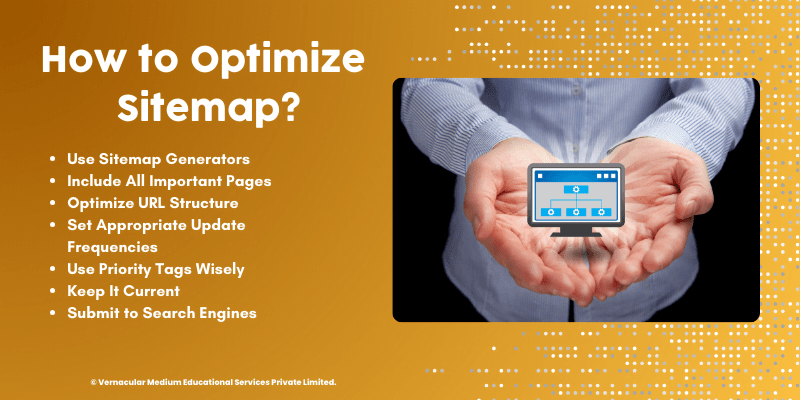In the vast landscape of Search Engine Optimization (SEO), sitemaps often fly under the radar. However, these unassuming tools play a crucial role in helping search engines understand and index your website effectively. Let’s dive into what sitemaps are, why they matter, and how to leverage them for SEO success.
What is a Sitemap?
A sitemap is essentially a roadmap of your website. It’s a file that lists all the pages on your site, providing information about each page’s content, importance, and relationship to other pages. There are two main types of sitemaps:
- XML Sitemaps: These are designed for search engines and contain metadata about each URL, such as when it was last updated, how often it changes, and its relative importance.
- HTML Sitemaps: These are user-friendly versions that help visitors navigate your site.
For SEO purposes, we’ll focus primarily on XML sitemaps.
Why Sitemaps Matter for SEO?
1. Improved Crawling and Indexing
Search engine bots use sitemaps to discover and crawl your website’s pages more efficiently. This is particularly important for:
- Large websites with numerous pages
- New websites with few external links
- Websites with isolated or poorly linked pages
- Sites with rich media content or deep architectures
By providing a sitemap, you’re essentially giving search engines a guided tour of your site, ensuring no important pages are overlooked.
2. Faster Discovery of New Content:
When you add new pages or update existing ones, including them in your sitemap can help search engines discover and index these changes more quickly. This is crucial for time-sensitive content or frequently updated sites.
3. Hierarchy and Priority Signals:
XML sitemaps allow you to indicate the relative importance of different pages on your site. Using the <priority> tag, you can assign values from 0.0 to 1.0, helping search engines understand which pages you consider most significant.
4. Enhanced Rich Snippets:
For certain types of content (like videos or images), sitemaps can provide additional metadata that may be used by search engines to create rich snippets in search results, potentially improving click-through rates.
5. Mobile-Friendliness Indication:
With mobile-first indexing, you can use sitemaps to specify which pages are optimized for mobile devices, helping search engines serve the most appropriate version to users.
6. International SEO Support:
For websites targeting multiple countries or languages, sitemaps can indicate language and regional variations of your content, supporting international SEO efforts.

Creating and Optimizing Your Sitemap:
1. Use Sitemap Generators:
For small to medium-sized websites, you can use online sitemap generators or plugins (if you’re using a CMS like WordPress). Larger or more complex sites might require custom solutions.
2. Include All Important Pages:
Ensure your sitemap includes all the pages you want indexed. Exclude pages like login screens, duplicate content, or any pages you don’t want appearing in search results.
3. Optimize URL Structure:
Make sure the URLs in your sitemap are clean, consistent, and follow your preferred structure (e.g., with or without “www”).
4. Set Appropriate Update Frequencies:
Use the <changefreq> tag to indicate how often each page is likely to change. Be realistic – don’t claim daily updates for static pages.
5. Use Priority Tags Wisely:
While you can set priorities for your pages, use this feature judiciously. Not every page can be a top priority.
6. Keep It Current:
Regularly update your sitemap to reflect new pages, removed content, or structural changes on your site.
7. Submit to Search Engines:
Once created, submit your sitemap to search engines through their webmaster tools (e.g., Google Search Console, Bing Webmaster Tools).
Common Sitemap Mistakes to Avoid:
- Including Non-Canonical URLs: Ensure your sitemap only contains the preferred versions of your pages.
- Exceeding Size Limits: Keep your sitemap under 50MB and 50,000 URLs. For larger sites, use multiple sitemaps with a sitemap index file.
- Neglecting Updates: An outdated sitemap can confuse search engines and waste crawl budget.
- Ignoring Robots.txt: Make sure your robots.txt file doesn’t block access to your sitemap.
- Including Noindex Pages: Don’t include pages in your sitemap that you’ve explicitly told search engines not to index.
Beyond XML: Other Sitemap Types:
While XML sitemaps are crucial for search engines, don’t overlook other types:
- Image Sitemaps: Help search engines discover and understand your image content.
- Video Sitemaps: Provide metadata about your video content, potentially improving visibility in video search results.
- News Sitemaps: For news websites, these can help your content appear in Google News and other news aggregators.
Conclusion:
Sitemaps might not be the most glamorous aspect of SEO, but they’re undeniably important. By providing clear, structured information about your website’s content and organization, you’re helping search engines do their job more effectively. This, in turn, can lead to better indexing, improved visibility, and ultimately, more organic traffic to your site.
Remember, a well-optimized sitemap is just one piece of the SEO puzzle. Combine it with quality content, strong on-page optimization, and a solid backlink profile for the best results. By giving sitemaps the attention they deserve, you’re laying a strong foundation for SEO success in an increasingly competitive digital landscape.
**********
Disclaimer:- Views expressed are the author’s own.




Insightful
Thank you!